Angela Ackerman's Blog: Writers Helping Writers, page 59
October 19, 2021
Phenomenal First Pages Contest
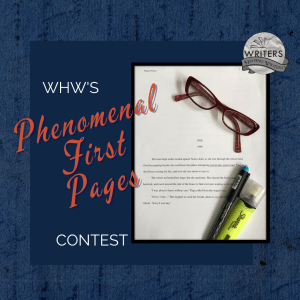 Hey, wonderful writerly people! It���s time for our monthly first-page critique contest
Hey, wonderful writerly people! It���s time for our monthly first-page critique contest 
If you���re working on a first page (in any genre except erotica) and would like some objective feedback, please leave a comment. Any comment :). As long as the email address associated with your WordPress account/comment profile is up-to-date, I���ll be able to contact you if your first page is chosen. Just please know that if I���m unable to get in touch with you through that address, you���ll have to forfeit your win.
Two caveats:
 Please be sure your first page is ready to go so I can critique it before next month���s contest rolls around. If it needs some work and you won���t be able to get it to me right away, let me ask that you plan on entering the next contest, once any necessary tweaking has been taken care of. Resources for common problems writers encounter in their opening pages can be found here.
Please be sure your first page is ready to go so I can critique it before next month���s contest rolls around. If it needs some work and you won���t be able to get it to me right away, let me ask that you plan on entering the next contest, once any necessary tweaking has been taken care of. Resources for common problems writers encounter in their opening pages can be found here.
 This contest only runs for 24 hours, start to finish, so get your comment in there!
This contest only runs for 24 hours, start to finish, so get your comment in there!
Three commenters��� names will be randomly drawn and posted tomorrow morning. If you win, you can email me your first page and I���ll offer my feedback.
We run this contest on a monthly basis, so if you���d like to be notified when the next opportunity comes around, consider subscribing to our blog (see the left-hand sidebar).
Best of luck!
PS: If you want to amp up your first page, grab our helpful First Pages checklist from One Stop for Writers. And for more instruction on these important opening elements, see this Mother Lode of First Page Resources.PPS: The Conflict Challenge we introduced as part of our book release last week was so popular that we’ve extended it through the end of November. If you didn’t get a chance to have fun with this challenge (and win some prizes), give it a try!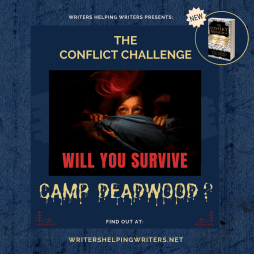
The post Phenomenal First Pages Contest appeared first on WRITERS HELPING WRITERS��.
October 14, 2021
A Show-Don’t-Tell Database for Writers
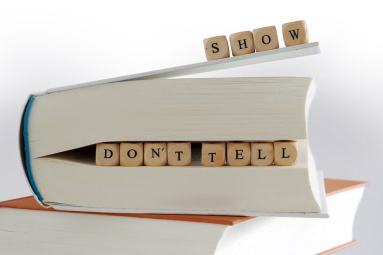
One thing we’re known for around here is description. For a dozen years, Becca and I have explored topic after topic, and whether it’s settings, emotions, backstory wounds, conflict, weather, or something else, we dive in and find all the ways this storytelling element can be leveraged via show-not-tell to improve your book and the reader’s experience.
As you know, once complete, some of these “thesaurus” collections become books, while others go straight to our One Stop for Writers site, so we can continue to expand on them and then fold them into our massive show-don’t-tell database.
That database continues to grow each year and is integrated with some of our smart tools, like the popular Character Builder, meaning endless character-centric brainstorming information is at your fingertips, making character creation & arc planning a lot easier.
Because we’ve restructured our database to have one main portal page rather than a drop-down menu of thesaurus topics, I thought I should give it some airspace. Too, not everyone knows that the thesauruses they first discovered here at the blog can be accessed as a single, expansive database:



If you have any of our writing guides, you’ll have a good idea of how each thesaurus functions. But if you’re new to the idea of a descriptive thesaurus, we urge you to take One Stop for Writers’ Free Trial for a spin so you can see and use this show-don’t-tell database for yourself.
When you choose meaningful details over bland, generic ones, every layer of your story grows stronger. And meaningful details is what show-don’t-tell is all about.
Don’t forget…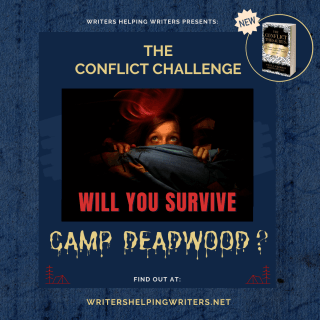
If you think you can survive the most dangerous, ill-fated Writing Retreat in history, Becca and I dare you to take the Conflict Challenge.
This choose-your-own-adventure type quiz makes YOU the protagonist of OUR story, where your decisions will lead you to victory…or the grave.
Will you take on Camp Deadwood? Prizes are waiting for those who survive!
The post A Show-Don’t-Tell Database for Writers appeared first on WRITERS HELPING WRITERS��.
October 11, 2021
Release Day: The Conflict Thesaurus Is Here!
Well, guys – another book is out in the world!
The Conflict Thesaurus: A Writer’s Guide to Obstacles, Adversaries, and Inner Struggles (Volume 1) is a game-changer for writers, screenwriters, game designers, and anyone else who needs a steady stream of ideas on how to challenge their characters inside and out.
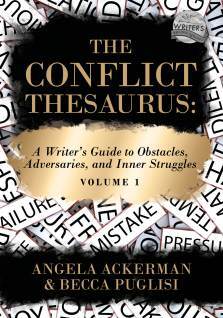
Conflict is a big deal. It touches everything: plot, pacing, characterization and character arc, theme, stakes, and more. It’s one of the best tools out there for helping our books stand out from others in our genre, too…if we use it the right way.
This book will help you brainstorm meaningful conflict scenarios that capture attention. Instead of just throwing rocks to slow their progress toward a goal, we’ll show you how to target a character’s soft spots. You’ll learn how to cause them to struggle internally while challenging them externally, forcing them to dig deep if they are to succeed.
Here’s a more detailed look at this book.
Find the full list of conflict scenarios (& sample entries) here.
Here’s what people are saying about The Conflict Thesaurus.
And here’s where you can buy it, print and digital.
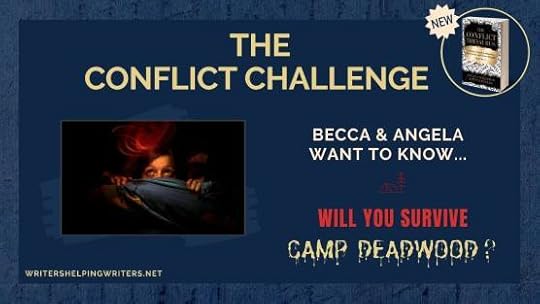
As writers, we shove our characters through life’s meat grinder, again and again. But what if YOU are the protagonist who has to face difficult problems, obstacles, and dilemmas?
Will your choices lead to victory…or failure?Let’s put it to the test! Survive, and you might just win something neat.
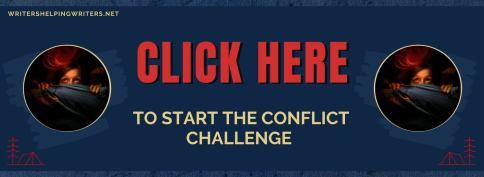
Yes, there are some great prizes waiting for you in the Conflict Challenge, but would it be a Thesaurus book release without a giveaway? Of course not. So…

Subject to our legal policy, of course. Draw ends midnight October 15th, EST.
Giveaway now closed. Watch your inboxes in case you’ve won!
Thanks for celebrating with us. Shares are greatly appreciated! After you take the CONFLICT CHALLENGE, send your fellow writers to this post so they can test their survival skills, too!.
The post Release Day: The Conflict Thesaurus Is Here! appeared first on WRITERS HELPING WRITERS��.
October 7, 2021
NaNoWriMo Prep for Plotters & Pantsers
It’s October, meaning many writers are turning their thoughts to NaNoWriMo, (National Novel Writing Month) starting November 1st, when they will attempt to write 50,000 words in a month.
 NaNoWriMo is a great time to lock up your internal editor and let creativity take the wheel.
NaNoWriMo is a great time to lock up your internal editor and let creativity take the wheel. But unfortunately for most writers, it can be a time of disappointment, because while hundreds of thousands of folks step up to the NaNoWriMo plate, near as I can tell, only around 15% actually finish. And that���s a big bowl of sadness, if you ask me, especially as it’s often preventable.
Two Big Reasons Why Writers Quit1. Sometimes life fish-slaps them in the face. An emergency crops up, or something unexpected comes along, and their time needs to be reallocated. Other times, already-overloaded writers decide to participate and discover they just can’t manage it along with everything else.
2. The writer loses track of where the story should go. When writers struggle too long with the ���what happens now��� question, they lose that forward momentum, start to doubt themselves, and fall out of love with the story. As those calendar dates pass with lackluster word count totals, catching up begins to feel impossible, or the story becomes too much of a mosh pit mess. So, they give up.
Most fall into this second category, but this doesn’t have to be anyone’s fate. So how do we avoid it? We prep, of course!
Prepping is for Plotters & PantersNo matter where you are on the plotter-or-pantser spectrum, you want to sit down on November 1st and feel good about having your fingers on the keyboard. The heady excitement of NaNoWriMo won’t last if the words dry up, so it’s best to make sure you’ve done everything you can to feel ready to create.
The two big types of NaNo prep we want to think about are Life Prep and Story Prep. Taking care of these in October is a super smart move.
The Ultimate NaNoWriMo Prep Guide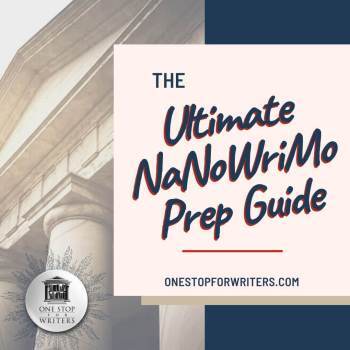
If you’d like some help getting ready, Becca and I have created an Ultimate NaNoWriMo Prep Guide for you!
Recently we poured our story-wired brains into a powerful Storyteller’s Roadmap at One Stop for Writers, a step-by-step plan to guide you from a story idea to a publish-ready novel. Obviously a big part of that journey is getting everything in place to write, so this special NaNoWriMo guide tackles some areas both Pantser and Plotters may wish to prep (and how to do so).
DOWNLOAD THE NANOWRIMO PREP GUIDEMake the most of your Preptober. We’re cheering you on!
The post NaNoWriMo Prep for Plotters & Pantsers appeared first on WRITERS HELPING WRITERS��.
October 4, 2021
Happy 6th Birthday, One Stop for Writers (+Giveaway!)
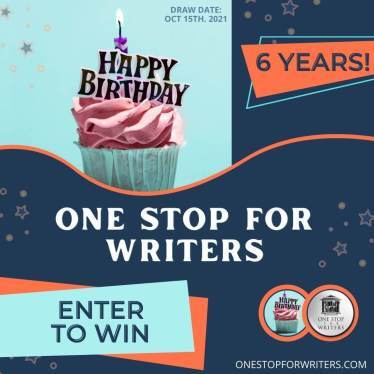
Welcome to the Birthday Zone, because our web app, One Stop for Writers, is six!
Unlike most six-year-olds, there are no tantrums at bedtime or arguments over eating green beans at dinner. Instead, it’s just rollout after rollout of incredible tools to add to your writerly playbook, like the Storyteller’s Roadmap and an even larger Description Database.
Take a look:


It’s hard to believe there’s so much show-don’t-tell goodness all in one spot!
Celebrate with us!We always do a little something to celebrate One Stop for Writers’ Birthday, and this year, it’s a giveaway. You could win…
One Stop for Writers Subscriptions
Gain access to the most powerful creative toolkit available and see your storytelling abilities soar. One Stop contains one-of-a-kind resources you won’t find anywhere else���including “story coaching in a box” through the Storyteller’s Roadmap.
If the learning curve is causing you to struggle, maybe it’s time to try our step-by-step system to go from that first idea to a publish-ready manuscript.
Five 1-month & two 6-month subscriptions are up for grabs!
A STORRIOR Subscription Box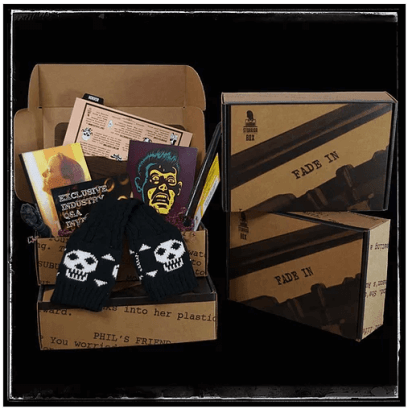
How would you like a box of writerly goodies delivered to your door? If you are in the US, you can enter to win a special STORRIOR subscription box to get your imagination fired up. The winner can choose from three different box themes (subject to availability):
October: Horror (but of course!)
November: The Logline
December: Fatal Flaws
One STORRIOR box is up for grabs!
Ready to win something awesome?
Last day to enter: October 15, 2021.
Watch your inbox in case you’ve won!
Thanks for being so supportive of us!The post Happy 6th Birthday, One Stop for Writers (+Giveaway!) appeared first on WRITERS HELPING WRITERS��.
October 2, 2021
Relationship Thesaurus Entry: People Who Are Dating
Successful stories are driven by authentic and interesting characters, so it���s important to craft them carefully. But characters don���t usually exist in a vacuum; throughout the course of your story, they���ll live, work, play, and fight with other cast members. Some of those relationships are positive and supportive, pushing the protagonist to positive growth and helping them achieve their goals. Other relationships do exactly the opposite, derailing your character���s confidence and self-worth or they cause friction and conflict that leads to fallout and disruption. Many relationships hover somewhere in the middle. A balanced story will require a mix of these dynamics.
The purpose of this thesaurus is to encourage you to explore the kinds of relationships that might be good for your story and figure out what each might look like. Think about what a character needs (good and bad), and build a network of connections for him or her that will challenge them, showcase their innermost qualities, and bind readers to their relationship trials and triumphs.
 People Who Are Dating
People Who Are DatingDescription:
Dating involves two people meeting socially, typically in an effort to identify a life partner. This is the early part of a romantic relationship, where those involved are getting to know one another by spending time together���very often, before much physical intimacy occurs. These dates are an opportunity to evaluate their compatibility and one another���s suitability for marriage, which is oftentimes the objective of courtship.
Relationship Dynamics
Below are a wide range of dynamics that may accompany this relationship. Use the ideas that suit your story and work best for your characters to bring about and/or resolve the necessary conflict.
Two people who are eager to get to know each other
Two people who are highly compatible and interested in the same things
Two people who are very different, reinforcing the idea that opposites attract
One party portraying an image that isn’t an accurate reflection of who they are
A relationship that remains superficial, as those involved avoid topics that might ruin things
Both parties wanting it to work out so badly that they’re blind to the other person’s faults
Either party entering the relationship with recent, unresolved baggage (a breakup, the death of a loved one, being fired from a coveted job, etc.)
An uneven relationship, where one party wants more from the other person or wants to move more quickly
Challenges That Could Threaten The Status Quo
The other person needing to relocate for work, school, or family
One party discovering that the other is seeing multiple people
An ex coming back into one’s life
One party failing to bond with a love interest���s children or pets
Secrets from one party’s past coming to light
One party becoming controlling, manipulative, or abusive
One person’s family or best friends not approving of the love interest
Being offered a job or school opportunity that requires increased focus, time, or energy
One party grappling with their sexual or gender identity
One party feeling pressured to change to stay in the love interest’s good graces
Medical or mental health needs arising that the other person isn’t prepared to handle
Discovering incompatible views on life choices (sex, marriage, children, morals, etc.)
One party facing financial difficulties
Learning something unsettling about the other party (they’re related to someone infamous, suspecting them of criminal activity, etc.)
Conflicting Desires that Can Impair the Relationship
Both parties disagreeing on the frequency or type of communication
One party wanting children while the other does not
One or both parties not being ready to commit or advance the relationship
One party losing romantic interest
Both parties holding onto differing religious beliefs while expecting the other to change
One party wanting a career that the other does not support
One party wanting to date others or bring an outside party into the relationship
One party wanting control over the other person
Clashing Personality Trait Combinations
Abrasive and Oversensitive, Controlling and Independent, Inflexible and Spontaneous, Proper and Rebellious, Adventurous and Timid, Extroverted and Introverted
Negative Outcomes of Friction
Arguments and fights
Experiencing anxiety or diminished self-worth
Being dumped
Staying in a less-than-ideal relationship because the character believes it’s better than being alone
Losing relationships with people who disapprove of the romantic relationship
The relationship becoming imbalanced (in the level of romantic interest, power, etc.)
Ghosting the other party��
Not attending gatherings where disapproving friends or family will be present, and missing out
Changing oneself to please the other person and losing sight of one’s identity
Fictional��Scenarios That Could Turn These Characters into Allies
Discovering a mutual dislike of the same person
Sharing an important hobby or interest
Embracing an unplanned pregnancy
A geographical relocation that benefits both parties
Having a shared business interest
One party stepping into a dangerous situation for the other
One party supporting the other through a difficult time
Both parties sharing an important secret
Ways This Relationship May Lead to Positive Change
Mutual love and respect leading to compromise and increased satisfaction
Trying new activities and expanding one���s comfort zone
Both parties expanding their knowledge of one another’s culture, religion, nationality, etc.
Taking a leap of faith and being rewarded for it
Discovering a new hobby or favorite pasttime
One party becoming more like the other (in a positive way)
Learning what it means to be imperfect, and loving someone anyway
Finding peace through extending forgiveness and grace
Themes and Symbols��That Can Be Explored through This Relationship
Beginnings, Betrayal, Endings, Family, Friendship, Innocence, Isolation, Journeys, Love, Stagnation, Teamwork, Vanity, Violence, Vulnerability
The post Relationship Thesaurus Entry: People Who Are Dating appeared first on WRITERS HELPING WRITERS��.
September 29, 2021
Meet Our Newest Resident Writing Coaches
It’s always exciting when fall comes around as it means a new season of the Resident Writing Coach program is about to start! We’ve had great fortune to have so many writing experts share their brainpower with us here at WHW. I know I’ve grown as a writer as a result, and I bet you have, too!
Each year we have a mix of new and returning coaches, so let me first bid goodbye to the wonderful James Scott Bell and Alli Sinclair. We greatly appreciate all you have shared with us. A special thank you to James (Jim) who’s been with the RWC program since the very beginning. It’s been so terrific having you on the blog!
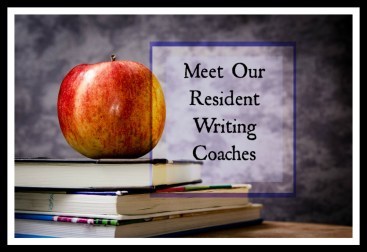 And of course this also means some new RWC faces to introduce!
And of course this also means some new RWC faces to introduce! Both these women have bucket loads of knowledge and experience to share, so without further ado…

Lisa Poisso, who specializes working with new and emerging authors, abhors the idea that writing a novel can sometimes feel like throwing darts wearing a blindfold. A classically trained dancer, her approach to creativity is grounded in structure, form, and technique as the doorway to freedom of movement. Via her innovative Plot Accelerator and Story Incubator coaching, she fast-tracks authors through story theory and development in just weeks while facilitating an author-paced ���developmental edit in a bottle.���
She holds a journalism degree and has decades of professional experience as an award-winning magazine editor and journalist, content writer, and corporate communications manager. In addition to story coaching, she is a developmental and line editor, aided by an industrious team of retired greyhounds. Her popular Baker���s Dozen newsletter shares 13 fresh resources for emerging authors every month. Find Lisa at LisaPoisso.com, download her free Manuscript Prep guide, and connect with her on Facebook, Twitter, and Instagram.
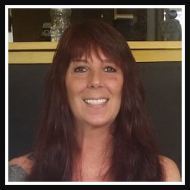
Sue Coletta is an award-winning crime writer and an active member of Mystery Writers of America, Sisters in Crime, and International Thriller Writers. Feedspot and Expertido.org named her Murder Blog as “Best 100 Crime Blogs on the Net” (2018-2021). She’s also a member of the Kill Zone (Writer’s Digest “101 Best Websites for Writers” 2013-2021).
Sue lives with her husband and two spoiled guinea pigs in the Lakes Region of New Hampshire and writes two psychological thriller series (Tirgearr Publishing) and true crime/narrative nonfiction (Rowman & Littlefield Group, Inc.). Sue appeared on the Emmy award-winning true crime series, Storm of Suspicion. She’ll be a panelist at 2021 New England Crime Bake, and will be teaching an advanced education course on serial killers for Foothills Regional (CT) via Zoom. Sue is happy to discuss murder and mayhem all across social land, including at her website, and on Facebook, Twitter, Instagram, and YouTube.
These coaches are joined by returning masterminds…
Marissa Graff has been a freelance editor and reader for literary agent Sarah Davies at Greenhouse Literary Agency for over five years. In conjunction with Angelella Editorial, she offers developmental editing, author coaching, and more. She specializes in middle-grade and young-adult fiction, but also works with adult fiction. Marissa feels if she���s done her job well, a client should probably never need her help again because she���s given them a crash-course MFA via deep editorial support and/or coaching. Find out more about Marissa here.
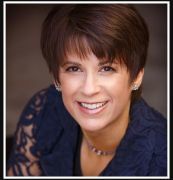
Colleen M. Story inspires writers to overcome modern-day challenges and find creative fulfillment. Her latest release, Your Writing Matters, helps writers overcome self-doubt and determine once and for all where writing fits in their lives. Her previous release, Writer Get Noticed!, was the gold-medal winner in the Reader���s Favorite Book Awards. Overwhelmed Writer Rescue was named Book by Book Publicity���s Best Writing/Publishing Book in 2018, and her novel, Loreena���s Gift, was a Foreword Reviews��� INDIES Book of the Year Awards winner, among others. Find out more about Colleen here.

Lucy V. Hay aka Bang2write is a script editor, author and blogger who helps writers. Lucy is the script editor and advisor on numerous UK features and shorts. She has also been a script reader for over 15 years, providing coverage for indie prodcos, investors, screen agencies, producers, directors and individual writers.
Publishing as LV Hay, Lucy���s debut crime novel, The Other Twin, is out now and is being adapted by Agatha Raisin producers Free@Last TV. Her second crime novel, Do No Harm, was a finalist in the 2019 Dead Good Book Readers��� Awards. Her next title is Never Have I Ever for Hodder Books. You can find out more about Lucy here.

Christina Delay is the hostess of Cruising Writers and an award-winning psychological suspense author. She also writes award-winning supernatural suspense for young adult and adult readers under the name Kris Faryn.
Fun fact: Faryn means ���to wander or travel.��� Since that���s exactly what she loves to do, you���ll find juicy tidbits on exotic and interesting places in all her books! Find out more about Christina here.
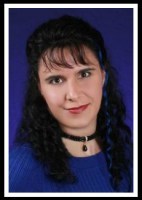
Jami Gold, after muttering writing advice in tongues, decided to become a writer and put her talent for making up stuff to good use. Fueled by chocolate, she shares writing tools, presents workshops, and offers insights on her blog about the craft, business, and life of writing. Jami is the winner of the 2015 National Readers��� Choice Award in Paranormal Romance for the novel Ironclad Devotion in her Mythos Legacy series. Read more about Jami here.

September C. Fawkes can scare people with her enthusiasm for writing and reading. She worked as an assistant to a New York Times bestselling author and writing instructor, and now does freelance editing at FawkesEditing.com. She has edited manuscripts of bestselling and beginning writers. She has published poetry, short fiction, and nonfiction articles, and her award-winning writing tips have appeared in classrooms, conferences, and on Grammar Girl.
She holds an English degree, has served as the managing editor of The Southern Quill literary journal, and had the pleasure of writing her thesis on the worldwide appeal of Harry Potter. Read more about September here.
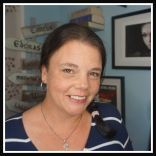
Lisa Hall-Wilson��is a writing teacher and award-winning writer and author. She���s the author of Method Acting For Writers: Learn Deep Point Of View Using Emotional Layers. Her blog Beyond Basics For Writers explores all facets of the popular writing style deep point of view and offers practical tips for writers. She is also the founder of the Deep Dive Author Club which offers a five-week online masterclass on writing in deep point of view and an ongoing membership class with critiques and support. Find out more about Lisa here.
Here’s to another year of amazing posts. As always, if there’s a topic you’d like help with, feel free to add it to the comments below!The post Meet Our Newest Resident Writing Coaches appeared first on WRITERS HELPING WRITERS��.
September 24, 2021
Need Compelling Conflict? Choose A Variety of Kinds
All right, hands up: What���s the one thing we can���t get enough of in fiction but we avoid like a screaming toddler in real life? Conflict.

It’s ironic that something we try to avoid in the real world is the very thing we can���t get enough of in books. Psychologically speaking, though, it makes perfect sense. Books do not significantly trigger a reader’s fight-or-flight instincts, making it safe for them to experience conflict���after all, that bad stuff is happening to someone else. Yet, if the story is well written, it draws them in so they’re right there with the hero or heroine, feeling some of that dread, anger, and confusion. They identify with the character’s experiences because their own real-life ones have taught them the agony of uncertainty and fear and what it���s like to feel completely outmatched.
In a nutshell: conflict contributes to reader engagement.��And with all the books on the market, keeping readers involved and interested all the way to THE END should be one of our biggest goals. It’s��crucial that we employ this storytelling element thoughtfully and purposefully, but with conflict in every scene���very often, multiple conflicts per scene���that’s a lot of drama. How do we keep those scenarios from becoming redundant, flat, or melodramatic?��The key is to use different kinds.
The variety of conflict is what makes a story crackle with power���whether we���re talking
about the ones at the heart of an overall plot, or scene-level complications meant to pressure the character and raise the stakes. The best stories don���t stick to the same type of conflict over and over. They pull from multiple forms that work naturally with the story���s main premise to hit the character from all sides.��
As Angela and I were writing��The Conflict Thesaurus, we had so many options for scenarios that it became clear we’d need to categorize them to keep them manageable. Because we’ll soon be releasing this book into the wild, we’re going to spill some of the beans a little early and share the categories we came up with, along with a few of the book entries from each. This breakdown should give you an idea of the various kinds of conflict that are available so you can use a strong variety of scenarios in your story.
Relationship FrictionRelationship friction can be the good kind (lighthearted teasing between siblings or an intense glance shared by two lovers), but often it���s the other���the type that creates a bristly moment of silence after an argument or the sting of hurt when a secret is carelessly spilled. Conflicts that create problems in relationships result in your character���s emotions being easily activated, increasing the chance they will lash out, cross a personal or professional line, or make a mistake that leads to more trouble.��
Examples: A Romantic Competitor Entering the Scene, Losing One’s Temper, and Peer Pressure
Duty and ResponsibilityAnother way to bring conflict to your character���s doorstep is to think about how duty and responsibility can pile up and disrupt the status quo���especially when it comes to their personal and professional life. A career is necessary to pay the bills, but it becomes a source of conflict when the demands of the job leak into family life. Likewise, if the paycheck can���t keep up with the mortgage or one partner is carrying the biggest load at home, tensions will rise.
When a character���s home���that most sacred and safest of places���becomes a powder keg, how much additional conflict will blow her world to bits? It won’t take much additional stress for her fragile ecosystem to shatter.
Examples: An Elderly Loved One Requiring Care, Having to Break a Promise, Needing to Disobey an Order
Failures and Mistakes
The aftermath of a failure or mistake can go one of two ways. If a character panics, their emotions go into overdrive and they become fixated on the worst-case scenario. They believe they must act immediately to prevent catastrophe, only they aren���t calm or objective enough to think things through. This usually lands them into even more hot water, which is bad for them but good for you and the story because…conflict!
A failure or mistake is also an opportunity to learn and grow, so this is the second path characters can take. Failing hurts, but it can act as a checkpoint that forces characters to look at their route and make decisions. If a character reflects on what happened and realizes they need to try again, then we know they���re open to change. This becomes a powerful character arc moment.��
Examples: Dropping the Ball, Doing Something Stupid While Impaired, Getting Caught in a Lie
Moral Dilemmas and TemptationsA dilemma is when a person faces a choice between two values, duties, or convictions that align with their sense of integrity. Moral temptations involve decisions that push the character to choose between right and wrong. Sounds pretty straightforward, but the temptation part makes it anything but.
Dilemmas and temptations���especially in extreme circumstances���can cause a character���s values to shift. Moral conflicts are not only great for forcing your characters to examine who they are and what they believe, they can also reinforce a story���s themes on right and wrong and personal identity.
Examples: Being Offered an Easy Way Out, Leaving Someone to the Consequences of Their Own Actions, Having to Steal to Obtain Something Vital
Increased Pressure and Ticking ClocksSometimes you want characters who are working under pressure or a short timeline to rise to a challenge; other times you need to explore what will finally break them. Pressure can help you do both. It’s also great for creating tension for readers as they wonder whether a character can handle the new threat. How can they work past this new challenge? Can they beat the clock? This additional stress will keep readers turning pages late into the night, anxious to discover if the character can circumvent this latest development or not.��
Examples: Being Given an Ultimatum, Unwanted Scrutiny, Being Made to Wait
No-Win ScenariosSometimes you need truly agonizing conflict���the type that forces the character to choose between bad and worse. Lose-lose situations are especially dangerous because they bog characters down in an emotional quicksand of fear, obligation, and guilt. This negative psychological spiral often results in them sacrificing their own happiness and needs.
Examples: Being Unable to Save Everyone, Being Set Up to Fail, Conflicting Internal Needs and Desires
Conflict is what we use to poke at a character���s soft spots, raise the stakes, and maybe encourage a specific path to self-growth. So when you’re choosing conflict options for your character, vary the forms. This ensures that the problems they’re facing will spread like cracked glass, threatening multiple areas of their life and making things exponentially more complicated and difficult for them.

PSSST! There are more categories, but this post was getting too long. We had the same problem with��The Conflict Thesaurus, so we decided to split it into two volumes. Scenarios from the categories discussed here are included in Volume 1 (available for purchase October 12th), which can help you brainstorm all their possible impacts on your character and story. The second volume will cover additional harrowing categories, including loss of control, power struggles, losing an advantage, ego-related scenarios, and miscellaneous challenges. This installment is tentatively slated for release in late 2022.
The post Need Compelling Conflict? Choose A Variety of Kinds appeared first on WRITERS HELPING WRITERS��.
September 23, 2021
Phenomenal First Pages Contest
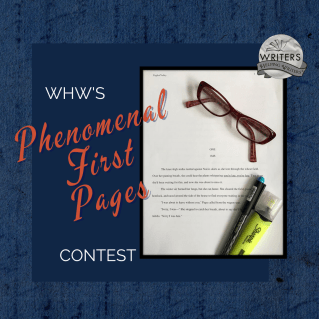 Hey, wonderful writerly people! It���s time for our monthly first-page critique contest
Hey, wonderful writerly people! It���s time for our monthly first-page critique contest 
If you���re working on a first page (in any genre except erotica) and would like some objective feedback, please leave a comment. Any comment :). As long as the email address associated with your WordPress account/comment profile is up-to-date, I���ll be able to contact you if your first page is chosen. Just please know that if I���m unable to get in touch with you through that address, you���ll have to forfeit your win.
Two caveats:
 Please be sure your first page is ready to go so I can critique it before next month���s contest rolls around. If it needs some work and you won���t be able to get it to me right away, let me ask that you plan on entering the next contest, once any necessary tweaking has been taken care of. Resources for common problems writers encounter in their opening pages can be found here.
Please be sure your first page is ready to go so I can critique it before next month���s contest rolls around. If it needs some work and you won���t be able to get it to me right away, let me ask that you plan on entering the next contest, once any necessary tweaking has been taken care of. Resources for common problems writers encounter in their opening pages can be found here.
 This contest only runs for 24 hours, start to finish, so get your comment in there!
This contest only runs for 24 hours, start to finish, so get your comment in there!
Three commenters��� names will be randomly drawn and posted tomorrow morning. If you win, you can email me your first page and I���ll offer my feedback.
We run this contest on a monthly basis, so if you���d like to be notified when the next opportunity comes around, consider subscribing to our blog (see the left-hand sidebar).
Best of luck!
PS: If you want to amp up your first page, grab our helpful First Pages checklist from One Stop for Writers. And for more instruction on these important opening elements, see this Mother Lode of First Page Resources.The post Phenomenal First Pages Contest appeared first on WRITERS HELPING WRITERS��.
September 21, 2021
How Much Do I Need To Describe My Character���s Appearance?
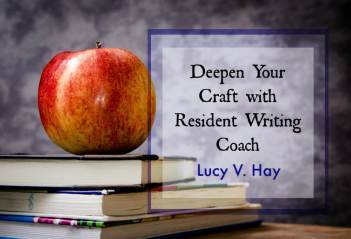
By Lucy V Hay
How characters look is a much-discussed element of writing craft. So, just how much do we need to describe our character���s appearance?
Obviously individual writers��� mileage may vary on this question. Some authors may spend a lot of time on character appearance. Others may do it more intuitively, or leave it almost entirely up to the reader���s imagination.
Coming from a screenwriting background, character appearance is a hot topic with my ���Bang2writers��� because of casting. The ���right��� actor for a character may refer to personality, but also appearance. For example, a LOT of people felt Tom Cruise was entirely the wrong choice for Lee Child���s Jack Reacher character!
With this background in mind then, I am going to offer up my top tips on character appearance in your novel. Ready? Let���s go ���
Beware of ���Laundry List��� Character IntroductionsCharacter introductions are super-important. The first time we ���see��� them, we should get a feel for WHO they are via WHAT they are doing.

In screenwriting, we say ���characters are what they DO��� ��� but too often, writers introduce their characters just by what they���re wearing. I call this the ���laundry list��� character introduction. Yet all of us know ���clothes DON���T make the wo/man���!
Sometimes it won���t be clothes. Instead it may also be the way they wear their hair, how they do their make up or whether they have certain physical attributes. (For example, whether the character has big breasts ��� Yes, you���ve guessed it, female characters fare worst in this).
Yes, what we choose to wear CAN reflect our attitudes (especially strong looks like punk or hippy). But the fact is too many writers use this as a lazy shortcut **on its own**.
KEY TAKEAWAY: Avoid the ���laundry list��� introduction. If you want to use clothes go ahead ��� just don���t rely on them to define the character.
2. Avoid non-stop moving body parts!

So if characters are what they DO, then we should rely on action when thinking about appearance. This Physical Feature Descriptive Database at One Stop for Writers offers some good hints for describing things like a characters��� lips and what they may do to signify different emotions.
However, we���re not out of the woods yet!
Whilst characters physically moving *can* be a good indicator of what they���re going through, we don���t want to rely on it too much either.
When it comes to novel writing, the psychological aspect is very important. If we reduce every character to what they���re physically doing all the time, it can adversely affect the read. Instead of an emotional connection, the reader becomes a voyeur.
This is most obvious when authors write constant actions pertaining to the body, such as ���
Eyebrows risingHands on / off hipsNodding / shaking of headSmiling / grimacingLicking of lipsHands in the air or similar gestures
In other words, constant moving body parts become a ���filler��� or worse, a stand in for actual characterisation. No thanks!
KEY TAKEAWAY: Avoid your characters��� movements becoming ���filler��� by taking the emphasis off their ���smaller��� actions. Use them in moderation instead.
3. Beware the WORD OF DOOM
There���s one word I see too often when I read female character introductions. Guess what it is ���
��� BEAUTIFUL!I call this the ���word of doom���. (BTW, we may also see other variants of this word too, ranging from ���pretty��� to ���sexy���, so nice try but no cigar!).
I���m not alone, either. Check out what this A List actor has to say on the matter.
In fact, the word of doom pops up in the screenwriting world so often there are whole websites devoted to terrible casting calls, such as Miss L���s brilliant but scathing Casting Call Woe over on Tumblr. Here���s another called @femscriptintros.
Authors are not off the hook either. In recent years more and more readers have been calling out novelists for objectifying female characters like this.
Confused?? After all, ���beautiful��� is a compliment, right?
Well, think on it this way. Female characters are often described by HOW THEY LOOK *over* WHAT THEY DO.
Yet if characters are supposed to be what they do, their behaviour is supposed to be what drives them, not how good-looking their appearance is.
Remember, a male lead might often be good-looking too, but they���re still more likely to be introduced by their character traits, than how they look. Gnash!
KEY TAKEAWAY: Avoid falling back on the ���word of doom��� when introducing female characters. Instead of focusing on their appearance, think about their internal character traits and behaviour. Personality before gender (this works for all characters, by the way).
Good Luck!

Lucy V. Hays
Resident Writing Coach
Lucy is a script editor, author and blogger who helps writers at her site, Bang2write.com. To get free stuff for your novel or screenplay, CLICK HERE.
Twitter �� Facebook �� Instagram
The post How Much Do I Need To Describe My Character���s Appearance? appeared first on WRITERS HELPING WRITERS��.
Writers Helping Writers
- Angela Ackerman's profile
- 1014 followers



